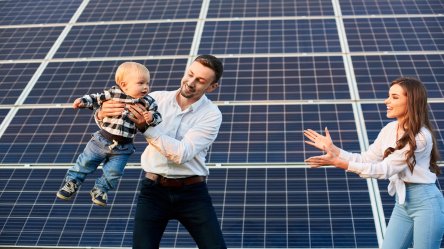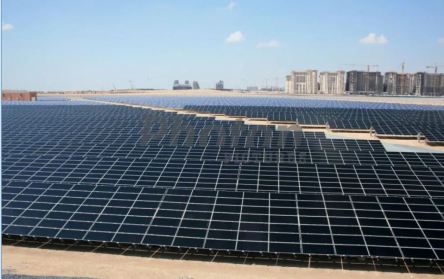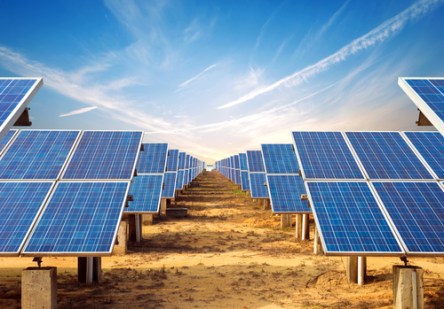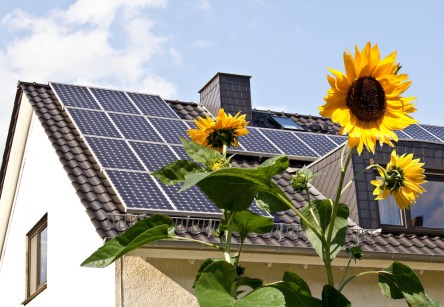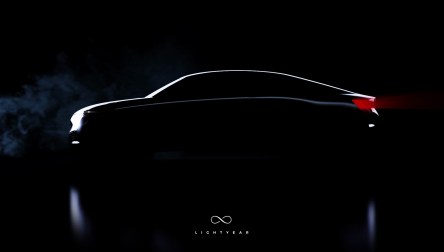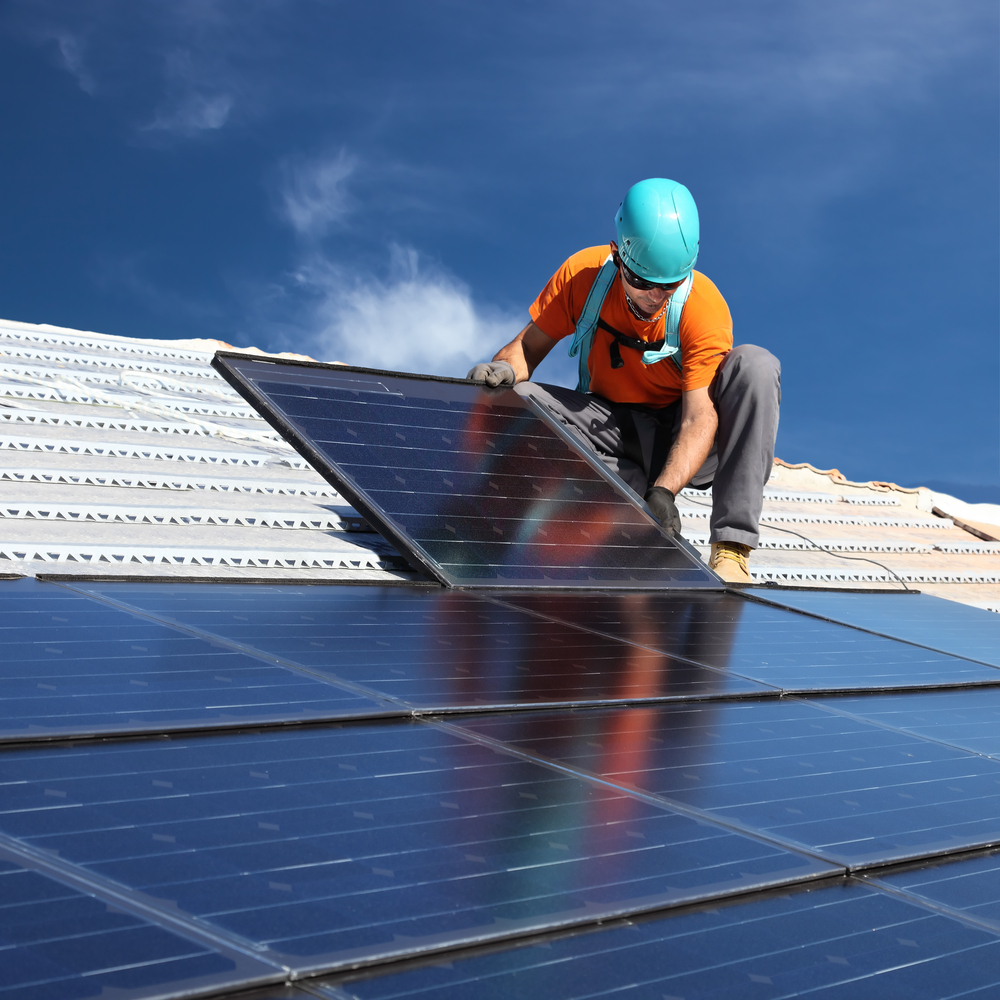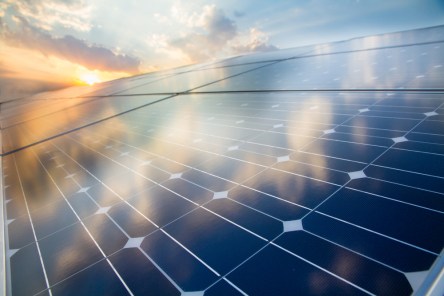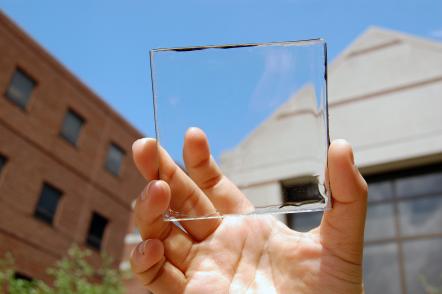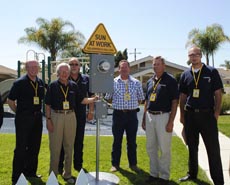Sacramento is one of the first cities to renegotiate its path towards sustainable power. Since the inception of California’s rooftop solar mandate, several municipalities have scrambled to accommodate the push towards clean energy. Sacramento may be the first of many cities to take advantage of a loophole in the mandate. Community solar The California Energy Commission approved a proposal from the Sacramento Municipal Utility District (SMUD) that would allow developers to use offsite solar panel installations in some new construction. The community solar option would allow developers to explore more cost-effective options for powering homes off-site. The existing community solar provision applies to shaded apartment buildings and single-family homes. The approved proposal opens the door for developers to choose rooftop solar or SMUD’s community solar for any project in the municipality. Ethan Elkind, director of the climate program at UC Berkeley’s Center for Law, Energy and the Environment explains the implications of the new provision. “There is a really strong precedential value here,” he said. “This is a new regulation that just went into effect, and this community solar piece of it hasn’t really been tested, and so it’s going to set a precedent for years to come for how utilities and real estate developers will respond to this regulation.” New yet weakening regulation? In essence, the new mandate is already accepting exceptions. Rooftop solar advocates fear the broader implications. Laurie Litman, member of the climate group 350 Sacramento, expressed her apprehensions: “The concern is that if it’s cheaper for developers to not put solar on people’s homes, then they’re going to opt for that choice,” says Litman. “That’s going to undermine the solar homes mandate throughout the state because then other areas and other utilities will ask for that waiver as well.” Secondly,...
World’s Brightest
Largest Solar Plant Opens
The world’s largest single-site solar power plant recently commenced operation. It outpaces the leading solar power farm by a hair’s width and leaves America’s largest in the dust. Sweihan Power Plant vs. The World Japan’s Marubeni Corp Sweihan photovoltaic power plant, located in the United Arab Emirates, took two years to complete. The site contains 3.2 million solar panels that produce 1,177 megawatts of energy. For comparison, the largest solar power plant in the United States is Solar Star in California. It has 1.7 million solar panels that produce 579 megawatts of energy. That’s enough to power about 255,000 homes, reports Solstice, the leading solar power provider in Cambridge, Massachusetts. It was the largest of its time when completed in 2015. Learn how the United States is nearing the end of solar ITC programs. Solar Star is, in fact, not among the largest solar farms in the world. India and China dominate the sun-powered energy. Shakti Sthala, Pavagada, Karnataka of India produces a contested 2,000 megawatts. It is followed by Kurnool Ultra Mega Solar Park of India which generates 1,000 megawatts. Longyangxia Dam Solar Park in China generates 850 megawatts. Kamuthi, Tamil Nadu of India offers 648 megawatts of power to nearby communities. Marubeni Corp, JinkoSolar Holding Co., and Abu Dhabi Power Corp. co-own the $870 million Sweihan solar farm. The project required eight international banks to secure funding. The UAE Energy Plan 2050 The project, also called Noor Abu Dhabi, is part of the UAE’s Energy Plan 2050. Introduced in 2017 by Sheikh Mohammed bin Rashid Al Maktoum, the energy plan is designed to produce renewable, nuclear and clean energy sources. The plan invests $163 billion in pursuit of a more sustainable and diverse energy supply including “44 percent clean energy, 38 percent...
Sunny Outlook
Space-Based Power
Solar power is a burgeoning alternative energy source that accounts for 1.6% of total U.S. electricity generation and encompasses enough installed capacity to power 12.3 million homes. It’s the second-fastest source of new generation on the U.S. power grid, but it’s not flawless. Arrays that capture solar energy don’t work at night or when obscured by cloud cover, atmosphere or seasonality. The United Nations estimates the global population will be 9.6 billion by 2050, so the rush is on to find new ways to generate large quantities of clean energy. For decades, scientists have explored putting solar arrays where night never falls and clouds don’t form and power transmission need not be interrupted by fickle weather or unfavorable orbital tilt. Specifically, in geostationary or low-Earth orbit, where satellites could capture solar energy, convert it into a microwave or a laser and beam it to Earth. Ground-based receivers would then convert the energy into useable electricity and add it to the electric grid. “If solar power is going to be the principal so-called ‘dispatchable’ baseload source of power that replaces today’s fossil-fuel-powered electric-generating stations, inherently you have to have the generating source be available all the time,” environmental scientist Dr. Deanna Conners wrote in 2018. Efforts to put space-based solar power generation into production have been hindered by cost and technology impediments. But recent developments are bringing the concept closer to reality. In 2018, scientists at the California Institute of Technology announced that they created a prototype lightweight tile, the building block of solar arrays capable of harnessing and transmitting solar energy from space. Earlier this year, China announced plans to place the first solar power station in geostationary orbit by 2050. Other countries in Asia and Europe are working on their own projects. A...
Under the Sun
Advancements in solar power
Solar energy technology is becoming more powerful and versatile than ever. That’s a good sign for property owners seeking cost and sustainability benefits. According to the Solar Energy Industries Association, enough solar photovoltaic capacity—created when semiconducting materials convert sunlight into electricity—was installed in the U.S. in 2018 to power 12.3 million homes, and total installed capacity is expected to more than double over the next five years. A recent milestone in solar energy development was San Jose, Calif.-based SunPower’s development of the world’s most powerful solar cells for the residential market. They’re capable of delivering 60% more energy than conventional solar panels over 25 years using the same amount of roof space. That might be of particular interest to residents of the manufacturer’s home state, which in 2018 became the first to require that all new homes have solar power. In another significant breakthrough on the residential front, engineers at Belgian university KU Leuven have created a solar panel prototype capable of converting sunlight directly into hydrogen using moisture in the air. This would give households their own greenhouse gas-free source of fuel for cooking, heating and other activities. They wouldn’t have to rely on industrial-scale production of hydrogen gas, which generates greenhouse emissions. The technology remains under development and it’s unclear when it will be brought to market. Other developers are working on harnessing solar energy to melt snow on roads during the day and light them at night, power home window curtains and warm car seats. Additional projects encompass everything from battery storage enhancements to aesthetic matters like customizing cells to blend into a roof’s design. Energy Sage, a service that connects homeowners with solar equipment installers, says, “For those considering solar panels systems, this long list of solar panel technology innovations from...
Nissan Energy Solar
Robust Power, Recycled
Some believe that solar panels require direct sunlight to work. Those same people may believe that the UK is the world’s most unsuitable place to harness the sun’s energy. Well, they are wrong. More than 880,000 people in the UK use solar panels and Nissan has taken note. In mid-March, the car manufacturer joined the ranks of Mercedes-Benz, Renault and Tesla and launched their take on a complete home energy management system, which they named Nissan Energy Solar. For now, only UK residents can try it in their households. This idea of utilizing the most valuable part of its electric vehicles—the batteries—after they’ve lived their first life in one of the vehicles (or have been declared terminated post some accident) is new and golden. Nissan is making a bullish push into the energy storage industry, and it does it on three fronts at once: using homes as powerhouses; off-grid power storage; electricity generator park. The storage system Nissan proposes, the xStorage, is the result of a collaboration with Eaton Industries. The xStorage can have three power options: 3.6 kilowatts, 4.6 kW or 6kW. There are two battery options, 4.2 kW or 6kW. The average unit weighs nearly 300 pounds (135 kg). Benefits of the system include: Increased independence from the national grid and electricity providers Cost reduction on your electricity bill of up to 66 percent The ability to generate, store and manage energy for use overnight (despite cloudy weather) and charge Nissan electric vehicles. A six-panel system costs about $5,383 including installation. Full solar and storage systems start at roughly $10,589. This solar plus electric vehicles is clearly a match made in heaven. According to CleanTechnica, about 32 percent of the electric driving respondents have also installed rooftop solar power. In addition, this type...
CA’s New Solar Panel Law ...
Savings + Risks
Not long ago, California became the first state to require that all new homes have solar power: single-family and multifamily properties alike. The rule is part of the state’s commitment to cut greenhouse gases. It will go into effect in the next two years. Under the new law, developers must either equip individual homes with solar panels or build a shared solar-power system serving a group of homes. The rooftop panels can either be owned or made available for lease on a monthly basis. But are they covered by an insurance policy? Insuring the Vision Here’s what the folks at the Insurance Information Institute have put together: Most solar panels are considered a permanent attachment (like a deck) and thus are protected by a homeowner’s policy. However, check with your insurance company to know for sure. Another thing to consider is the coverage amount—your insurance policy’s coverage limit is the maximum amount that will be paid toward covering a loss. Ensure you have the adequate coverage limit, because despite the significant contraction in the cost of solar panels, it’s still not negligible. Your premiums will suffer. Some carriers allow solar energy systems owners to purchase an optional endorsement just for the panels. Others include the coverage in the dwelling coverage (coverage A) if the panels are on the roof of the home or under coverage B if the panels are on the ground or on the roof of a detached structure. Leasing the solar panels can make a big difference in your policy: if you install a system with a lease or power purchase agreement (PPA), you are not the owner of the system. In this case, the company with whom you have the agreement owns the panels and is responsible for their maintenance....
Lightyear One
A Clean Solar Car
We’ve been watching how solar power is slowly making its way in a variety of industries. The automotive industry has been working extensively with solar in recent years, with Tesla assuming a leading role. Most people, when talking about using solar energy to power cars, refer to sourcing electricity from solar panels. But a Dutch company has a different idea. Lightyear One is the creation of five Eindhoven alumni who have already built two solar cars, Stella and Stella Lux, for the Bridgestone World Solar Challenge Cruiser Class. (Both projects are prototypes of four-seater solar cars.) The startup Lightyear announced their plans to combine onboard solar cells with an efficient battery pack and an optimized design to deliver a road-legal, four-seat electric car that can charge itself directly from sunlight. A car that can go the distance “You can think of the Lightyear One as being as an electric car redesigned from the ground up to combine the best of solar cars and electric cars,” said Lex Hoefsloot, CEO of Lightyear, in a prepared statement. “It’s a revolutionary step forward in electric mobility because we are able to combine a great look with extreme efficiency. This first model makes science fiction become reality: cars powered using just the sun.” The Lightyear One concept was unveiled in early July, touting a battery that can constantly replenish its power using the sun. In addition, the car can travel a range of up to 500 miles when fully charged. But most interestingly, the company claims that in the right sunny environment, such as Hawaii, the luxury sedan could potentially drive for months at a time between charges. This revolutionary feature solves for the notion that electric cars could be restricted to regions with reliable charging networks. The...
The Home Depot
GE + Tesla Offer Solar Savings
The Home Depot employees are known for their “orange blood” but they will now be known for their green hearts. Yardi Marketplace partner The Home Depot will receive a green facelift at several of its locations across the United States. The updates will help the world’s largest home improvement retailer reach its sustainability goals. Atlanta-based The Home Depot committed to a goal of 135 megawatts of clean power by 2020. As part of this pursuit, The Home Depot has teamed up with General Electric Current and Tesla Inc. The energy duo will install solar systems at 50 Home Depot stores. In turn, The Home Depot will buy the power output generated. The stores receiving solar systems are located in New York, New Jersey, Washington, D.C., Connecticut and California. Each solar rooftop will reduce the stores’ utility demand by one third. The precise terms of the agreement have not been disclosed. So far, only six locations will receive Tesla storage batteries along with GE solar panels. The Tesla Powerpack batteries will permit The Home Depot to store excess power generated during peak hours for future use. In addition to solar systems and batteries, The Home Depot has installed a 30,000-acre wind farm in southern Texas. The wind farm hosts 125 turbines and generates enough power to fuel 100 Home Depot stores. The project has provided $150,000 in community benefits while decreasing the company’s carbon emissions. More than 170 Home Depot sites have received Bloom Energy fuel cells that generate 85 percent of the energy that each store needs. Powered by natural gas, the fuel cells efficiently generate electricity with less carbon emissions than other techniques. There are more than 2,200 Home Depot stores in the U.S., Canada and Mexico. Since 2010, Home Depot’s American stores have...
Shining Cities
Solar is Hot in 2017
Solar power installations marked a new high in 2016. The U.S. now has 42 gigawatts of solar photovoltaic energy capacity, sufficient to power 8.3 million homes and reduce carbon dioxide emissions by 52.3 million metric tons annually. The solar capacity grew by 55 percent year-over-year, according to an analysis released by Environment America Research and Policy Center. The report, “Shining Cities: How Smart Local Policies Are Expanding Solar Power in America,” shows that the top five positions are occupied by San Diego, Los Angeles, Honolulu, San Jose and Phoenix. An impressive number of American citizens have invested in their own solar projects in their communities, while many more are ready to enroll. In 2016, just the top 20 cities accounted for as much solar power capacity as the entire country had installed in 2010, nearly 2 gigawatts. There is also a new number one solar-powered city, San Diego, which is replacing Los Angeles. But even though the industry marked such great progress last year, there are still vast amounts of untapped solar potential. San Diego, for instance, has developed less than 14 percent of its technical potential for solar energy on small buildings. “San Diego is setting the standard for other cities across the country when it comes to protecting our environment and creating a cleaner future,” San Diego Mayor Kevin Faulconer said. “This new ranking is a testament to the many San Diego residents and businesses harnessing our natural resources as we march toward our goal of using 100 percent renewable energy throughout the city.” In order to shift the U.S. toward an economy powered by 100 percent renewable energy, officials must continue to adopt a series of pro-solar policies. “Cities are recognizing that clean, local and affordable energy just makes sense,” said...
Apple Advances
Solar + AI
Tight-lipped Apple is finally opening up on its tech advancements and is turning heads: the company’s recent developments explore how a combination of solar energy and artificial intelligence can further reduce energy consumption. Solar Energy The California-based tech company has joined forces with utility provider NV Energy. Together, they will increase the solar power to Apple’s Reno data center by 200MW. In a press release, NV Energy president and CEO Paul Caudill stated, “We are proud to play a role in helping Apple meet their energy needs with Nevada’s abundant solar resource.” He continues, “In partnership with our customers, we continue to develop a more balanced fuel mix in a way that benefits the local economy by providing hundreds of jobs for Nevadans, particularly those in the International Brotherhood of Electrical Workers local 357 and 396, and advances the state’s policy goals.” Apple will dedicate 5MW of power towards their partner’s solar program for residences and businesses. “Our partnership with NV Energy helps assure our customers their iMessages, FaceTime video chats and Siri inquiries are powered by clean energy, and supports efforts to offer the choice of green energy to Nevada residents and businesses,” said Lisa Jackson, Apple’s vice president for environment, policy and social initiatives. She adds, “Investing in innovative clean energy sources is vital to Apple’s commitment to reaching, and maintaining, 100 percent renewable energy across all our operations.” Artificial Intelligence When it comes to AI, casual Apple users think of Siri, the (more-often-than-not) intelligent assistant. But Apple’s new approach to machine learning explores how AI can reduce energy usage in data centers Google was one of the earliest major tech companies to blaze the trail for energy-saving AI. As early as July 2016, Google announced that AI reduced data center energy...
Super Solar
Harnessing sun power
There is really only one renewable energy source that can power the whole planet —solar energy. The sun’s energy can power the earth many times over. We’re all familiar with solar technology’s limitless potential, but have yet to actualize its true capability. One of the main hurdles with solar technology is where to put it, as the places where we most need power are lacking space for the big, heavy panels. Silicon Valley startup Ubiquitous Energy, a company spun off by researchers at Massachusetts Institute of Technology and Michigan State University, believes they’ve found the solution—a new type of technology that could span from industrial applications to consumer devices and handheld gadgets—cell phones and tablets that never run out of battery life. Sounds like fantasy, doesn’t it? Until now, solar cells have been only partially transparent and usually a bit tinted, but the startup’s transparent solar cells are so clear that they’re practically indistinguishable from normal panes of glass. Transparent solar is something taught in elementary school: the sun transmits energy in the form of invisible ultraviolet and infrared light, as well as visible light. A solar cell that is engineered to only capture light from the invisible ends of the spectrum, will allow all other light to pass through—thus, it will appear transparent. “It opens a lot of area to deploy solar energy in a non-intrusive way,” Richard Lunt, co-founder of Ubiquitous Energy, said in an interview with Michigan State’s Today blog. “It can be used on tall buildings with lots of windows or any kind of mobile device that demands high aesthetic quality like a phone or e-reader. Ultimately we want to make solar harvesting surfaces that you do not even know are there.” The secret to creating such material is organic chemistry....
Yeloha
Panel-less solar power
The price for photovoltaic cells is plunging, in the last six years it has fallen by at least 50 percent. According to a Gallup poll, 79 percent of Americans expressed the interest for the U.S. to develop more solar power. The product is already growing, accounting for 36 percent of all new electric capacity through the first nine months of 2014, according to the Solar Energy Industries Association. Although on an upward swing, solar power has yet a lot of catching up to do. The U.S. Energy Information Administration reports that the United States generated approximately 4,093 billion kWh of electricity in 2014. The most part of the electricity (two-thirds) came from fossil fuels (mainly coal and natural gas), and one-fifth from nuclear. Solar accounted for only 0.4 percent. The reasons are various: the roof is facing the wrong way or needs replacing, there is too much shading from mature trees or other buildings, the renter status which doesn’t give them the right to make such a decision, simply lacking those 10 or 15 grand to pay for installation, or the not-so-good credit that cuts any possibility of financing or long-term purchase agreement. The future looks different. A new sharing platform dubbed Yeloha focuses on a new approach, which combines the power of social networks and the attractiveness of the sharing economy, aiming to offer solar power regardless of location of income level. What’s the plan? Yeloha has two types of customers—sun hosts and sun partners. The sun hosts are represented by the people living under eligible sunny roofs, but can’t afford the costs for the panels. In their case, Yeloha will install its own panels at no cost and give them a portion (typically one-third) of the electricity they produce, for free. In...
Bright Future
Harnessing solar technology
With the effects of climate change becoming more and more visible every passing day, introducing environmentally friendly practices into everyday life becomes increasingly important. And while renewable energy still has high investment costs in many cases, returns on initial investments do not fail to appear. They may come in special tax rates, increase in prestige, lower operating costs, increased rent rates and high occupancy levels, thanks to green-loving Millennials. Plummeting costs And as more research goes into green energy and renewable sources, initial investment costs are dropping by the day. In fact, according to recently revealed research by the Lappeenranta University of Technology (LUT) in Finland, solar and wind energy is expected to become the cheapest form of energy in the near future. The Neo-Energy project, which conducted the research, uncovered that North-East Asia, especially China will be able to switch to a completely renewable energy system within five to ten years, under economically feasible conditions. In fact, project simulations show that the price of solar electricity will be cut in half by 2025-2030, thanks to costs decreasing 20 percent every times capacity is doubled. Solar cells from the sea Not only is solar energy becoming more cost-effective, it is also getting greener every day. While green energy becoming greener does sound somewhat unnecessary, no energy source is completely green. Wind turbines and photovoltaic panels are still manufactured using man-made materials, the production of which does in itself also carry a carbon footprint. Not for long, though, if researchers at Queen Mary University of London’s (QMUL) School of Engineering have their way. In February 2015, QMUL researchers have announced successfully creating electricity-generating solar cells using the chemicals chitin and chitosan, found in the shells of shrimp and various other crustaceans. The two biomass-derived materials...
Harnessing the Sun
HACSB Solar Project
Investing in earth-friendly sustainability, the Housing Authority of the County of Santa Barbara (HACSB) took green to the next level with the recent installation of solar photovoltaic (PV) systems on 90% of its housing units. It’s a precedent setting project, and one of the largest solar projects by any housing authority in the country, to date. The story of this initiative is as much about the process as the result. Initially, the photovoltaic project was expected to cover just a small portion of the Housing Authority’s portfolio with funding through a stimulus grant offered by HUD. But a confluence of other grant options available made a portfolio-wide retrofit possible. The effort resulted in 863 of HACSB’s almost 1000 units installed with solar PV, a system sized at 1.7MW – enough to offset 100 percent of the electricity energy needs for the 863 units. The PV project utilized American-made solar panels from SolarWorld and employed a local business, Planet Solar, for the installation. “This was a case of unique timing and a whole host of funding sources in order to pay for the project,” says Loren Reeves, HACSB bookkeeper and solar initiative project manager. In addition to the HUD stimulus funding, the HACSB utilized $3.5 million in funding through Multifamily Affordable Solar Housing (MASH) offered through the California Public Utility Commission (CPUC). Following MASH, the HACSB opted to go all in, taking advantage of available 1603 federal funds from the U.S. Treasury Department. Ultimately, all $12.5 million for the project was paid for from grant funding, meaning that once the switches flipped on, the Housing Authority and its residents received immediate relief on their electricity bills. “We are really proud of this project and I think a lot of other people in the community...

